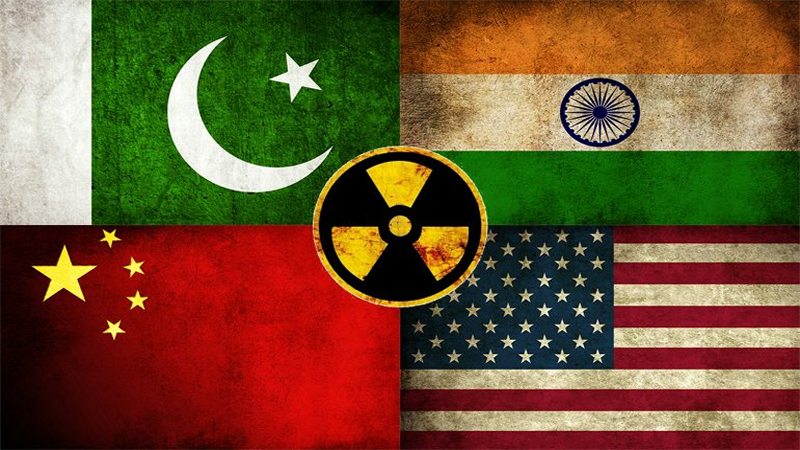
by M Waqas Jan 15 July 2019
Over the last decade, India’s rapid expansion of its conventional and nuclear arms capabilities have presented a worrying dilemma concerning the South Asian region’s security and stability. This holds especially true considering how its clear ambitions to translate its economic rise into a menacing projection of hard-power have remained on full display particularly under the BJP’s tenure. While many observers have come to regard these ambitions as the ruling party merely pandering to the populist vote, the steady consistency with which this policy has been carried throughout the last decade represents a dangerous mindset that appears to have become deeply engrained within India’s civil and military bureaucracy. This mindset and its obsession with external hard-power are further evident in the institutionalization of concepts such as Cold Start and Surgical Strikes both of which have been formalized as part of the Indian State’s official policy as well as its military doctrine.
For instance, both these concepts have been defined at length in the Joint Doctrine of the Indian Armed Forces that was released in April 2017 as well as the Indian Army’s Land Warfare Doctrine that was published the following year. As a clear signal of its regional ambitions, both these documents have also unmistakably identified Pakistan and China as India’s principle source of threats. In order to counter these threats, these same documents advocate the development of military strategies aimed at pre-set and purportedly restrained instances of minimal force projection that allows India to remain well within the nuclear threshold. This threshold that currently pervades throughout India’s strategic rivalry with both Pakistan and China is arguably the key to maintaining the delicate strategic balance that currently pervades throughout the South Asian region. A region that otherwise comprises of a key locus for the world’s future economic growth and development.
However, the fact that India’s stated policy is to alter this strategic balance radically represents a dangerous mindset, that is based more on its own solitary potential for growth rather than that of the wider region. In what can be termed as nothing short of a myopic outlook to the entire region’s trajectory, India’s efforts at enhancing its force projection capabilities and tilting this delicate balance in its favor is replete with risks. Risks that are in turn deeply rooted in unqualified and broad-ranging premises that assume both Pakistan and China to remain as passive spectators to its aggressive military posturing.
Hence, by continually aiming to raise the nuclear threshold, the concepts mentioned above of cold start and surgical strikes are in essence, aimed at downplaying the risks of a potential nuclear exchange in South Asia. From a purely rational perspective, this policy while appearing as nothing short of madness, openly flirts with the grave sanctity of the escalation ladder on which the region’s strategic planners and decision-makers rely on when calculating the possibility of a potential nuclear first-strike. As a Nuclear Weapons’ State (NWS) that shares disputed borders with two other Nuclear Weapons’ states, India’s dangerous posturing is thus heavily dependent on it being perceived as a responsible Nuclear power to both Pakistan and China. However, it is this perception of being a responsible NWS which India is actively working to negate as evident in its leaders’ jingoistic saber-rattling.
These include regular statements by Indian leaders in which by openly alluding to the death and annihilation of its strategic rivals, one can witness a certain normalization of nuclear brinkmanship which has become a modus operandi of sorts for Prime Minister Modi. Similar allusions to India possessing the ‘Mother of all Bombs’ (in the form of perhaps thermo-nuclear weapons) also represents a kind of posturing that is aimed at upending the status-quo and provoking a response. These statements, when coupled with the Indian military-bureaucracy’s clear allusions to reneging its No First Use policy, have further led to even more considerable ambiguity concerning India’s strategic calculus. As a result, all these instances represent a dangerous precedent being set for what is considered as ‘acceptable risk’ by India’s strategic planners.
While such negative posturing has been successful in communicating India’s increased risk-appetite to its strategic rivals, what’s unclear is whether these risks are based on a credible deterrence capability or quite simply, the egoistic hubris of its elected leaders and bureaucratic machinery. In what can perhaps only be described as an infantile staring contest; in which one’s sole chance of survival from a nuclear holocaust is counting on the other party’s willingness to blink first, the Indian state’s projection of hard-power seems to be based on more of a wild gamble than the well-thought-out contingencies of a significant nuclear power.
Hence, with the Indian leadership’s official preference of a defence policy steeped in the risks of a nuclear exchange, the merits of institutionalizing its approach to brinkmanship are something that appears downright non-sensical in this day age. Especially during a time where economic growth and human development remain as some of the region’s most pervasive challenges, India’s aggressive regional posturing hark back to the politics of a bygone era in times that otherwise require a visionary approach to fostering regional peace and stability.
